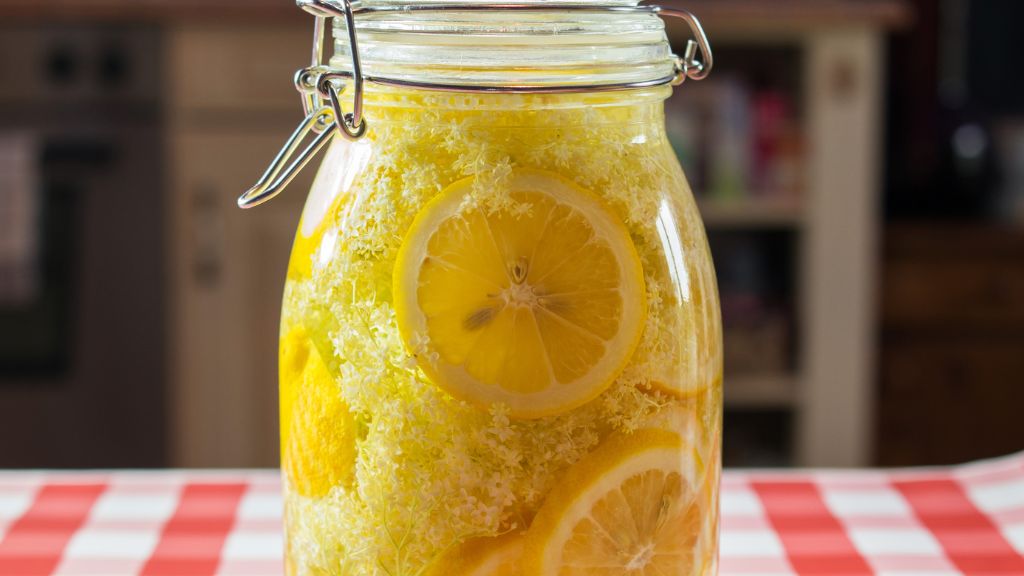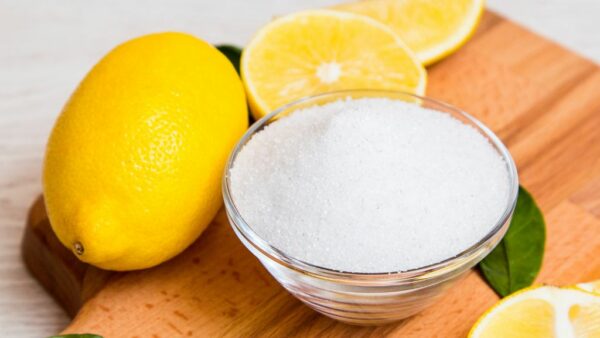Most of us have probably used citric acid at home, as it is perfectly suitable for descaling household appliances. However, not everyone knows that citric acid (E330) is among the most important additives applied in the food industry due to the several purposes it can be used for. Let’s see what citric acid is and where it can be found.
This article contains all the information you need to know about citric acid:
- What is citric acid?
- How is citric acid produced?
- What is citric acid used for?
- Applications of citric acid
What is citric acid?
Citric acid is a weak colorless or white acid that is supplied as a crystalline powder as an additive. Citrus fruits contain a high amount of citric acid, especially lemon and lime, with a dry matter content of up to 8%. Berries (blackberry, raspberry, wild strawberry, red currant), pineapples, rowanberries and cherries also contain citric acid. 99% of the citric acid found on the market is not extracted from fruits though, but produced artificially. China is the largest producer of citric acid in the world.
How is citric acid produced?
They first used citric acid in the food industry back in 1784, when Swedish-German chemist Carl Wilhelm Scheele managed to isolate and crystallize citric acid from lemon juice. By the end of the 1800s, citric acid was so popular that its production reached an industrial scale. The company Charles Pfizer & Co from Italy extracted citric acid from unripe fruits they purchased. They hadn’t found a new method for producing citric acid up until the time when World War I made the trading of calcium citrate impossible. Eventually, an American chemist working for Pfizer found a solution in 1917 by discovering that citric acid can be produced from the fungus Aspergillus niger. As a result, Pfizer started to produce citric acid 2 years later in large proportions. Even the cost of production decreased significantly by applying this new method.
During production, the mold feeds on sugar and excretes citric acid as a result. The source of sugar can be molasses, corn-based syrup, starch or other cheap sugar solutions. They filter the mold from the solution and citric acid is precipitated with calcium hydroxide, resulting in calcium citrate. Finally, they get citric-acid by treating calcium citrate with sulfuric acid.
What is citric acid used for?
Thanks to the fact that citric acid is one of the strongest edible acids, 70% of the world’s entire citric acid production is used in the food industry. It is mainly used as a flavoring and preservative agent, mostly in soft drinks and sweets. The application of citric acid is generally permitted in the food industry, with the exception of untreated food products and products that cannot be modified with additives.
Citric acid is not only used for soft drinks and sweets but candies, marmalades, jams, ice creams, fruit juices, bagged vegetables and fruits, cheeses, meats and pastas as well. They also use it for the production of edible fats and the treatment of fresh fish.
Applications of citric acid
As a flavoring agent
Citrix acid adds a unique sour taste to food products and it also enhances their flavors, especially that of fruits. It is an ideal choice for fruit juices, soft drinks, candies and frozen food. It also has a key role in adjusting the pH value of food and in the reduction of acidity. For instance, acidification is an important step during the production of cheese: a high pH level results in a crumbly texture, while certain cheeses melt and become stretchy at a certain pH level. With the help of citric acid, the pH value can be adjusted in a way that the desired texture is reached during production.
As a preservative

Citric acid has antimicrobial properties, making it an ideal ingredient for foodstuff such as ice creams, soft drinks, canned food or snacks. The pH value of citric acid is very low so it decreases the pH value of the food as well, creating a hostile environment for microbes.
As an antioxidant
If we cut an apple, banana or pear in half, it starts browning immediately. This is caused by an enzyme called polyphenol oxidase (PPO). Although the browning of fruits means no health risk, it is not a very aesthetic sight. Citric acid can prevent the fruits from browning by decreasing their acidity and limiting the activity of PPO. They often mix citric acid with ascorbic acid and erythorbic acid to reach an even greater effect. As an antioxidant, it not only prevents the fruit from browning: it also helps preserve the fat and vitamin content as well as the color of food.
As a stabilizer
Stabilizers increase the stability of fruits, protecting their texture. For example, they prevent fat separation. In ice creams, fats have an important role in reaching a creamy texture; still, fats tend to separate without a functional ingredient. The role of citric acid is to prevent this phenomenon. Additionally, citric acid can be used for binding heavy metals, preserving the red color of meat products and improving the baking properties of dough and flour. It is also suitable for increasing the acid content of wines and preventing ferric hazes. With the addition of citric acid, small corrections of the acid levels can be performed before bottling or fining, when it would be too late for adjustment with tartaric acid.
In the food industry, citric acid is preferred to other similar ingredients due to its availability, solubility, low price and mild fruity taste it adds to food products.
Other applications

It is not only the food industry that benefits from the useful properties of citric acid: it is present in the cosmetics and pharmaceutical industries as well as in the production of detergents. For instance, they use citric acid widely as a preservative in different cosmetic creams, gels and liquids. They also use it as an odorless alternative to white vinegar for painting apartments and for the removal of rust from steel.
Citric acid is considered harmless; our body can utilize it fully. It does pose one potential health risk though: due to its way of production, it can cause an allergic reaction for people with mould allergy. Also, since it is a strong acid, it might cause dental caries.
Citric acid is very popular thanks to its low production costs and widespread usability both in the industry and the household.


